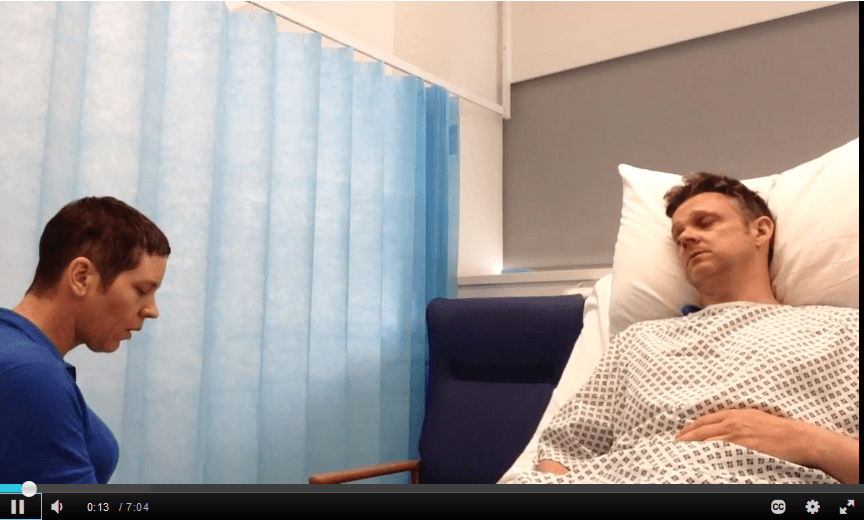Following on from Health’s Got Talent in June (see our previous blog post), we are sharing some of the excellent learning and teaching and practice presented at the event. In this post we will explore the use of technology to produce engaging content for students, with an example from Kat Millward in the School of Health Sciences. Kat is module leader for the Clinical Assessment in Primary Care module, which is part of the PGDip/BSc Hons Public Health (District Nursing) and the BSc Hons/GradDip/PGDip Primary Care (Practice Nursing). You can view an interview with Kat where she explains how she used video simulations within her teaching (Kat’s section starts at 15.00 mins).
Contents
Blend your module with videos and online collaboration
What did Kat do?
- Kat simulated and filmed a history-taking and diagnostic decision-making situation between a nurse and a service user. The first video produced showed the wrong way of carrying out this task, the second the right way of doing it.
- She then created a learning activity on Moodle to encourage students to critique the two approaches by asking them to:
- watch both videos and reflect on the practice bearing in mind a list of questions/criteria that she provided.
- post a summary of their critique using Moodle forum and encouraged them to provide constructive comments to each other.
- Finally she reviewed the contributions before the next class, during which she discussed the main themes arising from the posts with her students.
What was the pedagogical need?
Constructive alignment: the module’s summative assessment is an essay in which students need to “provide an in-depth evidence based and critical evaluation of [their] OSCE (Objective Structured Clinical Examination) performance”.
This activity enabled them to develop critical skills and apply them to their own practice. It also allowed students to retrieve and select prior knowledge acquired in lectures and through their readings to apply to their critical assessment of history-taking and diagnostic decision-making.
Student Feedback and engagement
Just under 90% of students enrolled on the module engaged with the videos and contributed to the forum, with a handful of students also providing constructive feedback on each other’s contributions.The “Moodle resources for this module have supported my learning” item in the module evaluation also received a score of 4.4/5 with students describing the activities as “good” and “helpful”.
Key takeaways
- The activity was not a stand-alone online task, it was clearly embedded into the module: students were incentivised to watch the videos so that they could participate in the activity and be able to discuss the themes in class.
- A great example of blended learning to open up the classroom and create more opportunities for learning.
- The activity was also constructively aligned with the main formative assessment (OSCE) and the summative essay.
- The Moodle activity was used as connection between the lectures, formative assessment and class discussions, enabling the students to connect theory and practice.
Want to blend your teaching and increase student engagement?
The Educational Technology Team in Learning Enhancement and Development (LEaD) can provide pedagogic and technical expertise and support to help you develop your teaching further.
Drop us an email and we would be happy to discuss with you how we can help.




Great post Sarah, very informative.